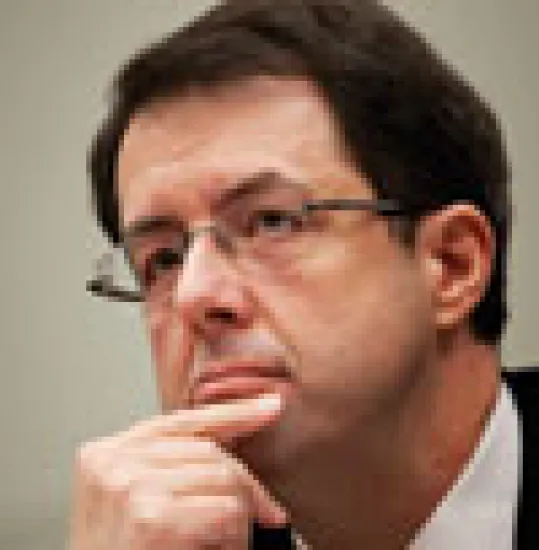Robert Kelly, chairman and CEO of Bank of New York Mellon, is one bank boss with reason to smile these days. His company — the world’s largest global custodian bank, with more than $20 trillion under administration and another $1 trillion in assets under management — has been profitable throughout the recession.
The bank has also repaid the money it received from the Troubled Asset Relief Program and, assuming continued market cooperation, projects sustained revenue growth from asset management and securities servicing. Kelly, 55, spoke to Institutional Investor Staff Writer Julie Segal in mid-August about the U.S. government’s actions after Lehman Brothers Holdings filed for bankruptcy, the Treasury’s stress tests of the major banks and the outlook for mergers and acquisitions among asset managers.
1. Institutional Investor: Why did Bank of New York Mellon accept TARP money, given that it has been profitable and didn’t have much exposure to consumer mortgages?
Robert Kelly: We were viewed as a key part of the U.S. financial system, and [the government] wanted to make sure there was no question about our health as well as that of the other major banks. That’s the fundamental difference between the U.S. plan and the U.K. plan: The U.K. plan morphed into a bailout for banks that were not healthy, while the U.S. plan was one where the largest financial institutions were clearly designated to be survivors, and the government wanted all the major banks to be recipients of TARP.
2. What happened on October 13, 2008?
Hank Paulson, then secretary of the Treasury, had called the day before and said he wanted to see me in his office the following day with other CEOs. None of us knew who the attendees would be. We had a fairly short discussion about the state of the economy and the trouble it was in. He wanted to support the major U.S. financial institutions and thought one way to do that was to provide a preferred-stock injection. It was a systemic move, from the government’s standpoint, one of the numerous, very aggressive and creative things that Treasury and the Federal Reserve Board did in the fall of last year to avoid a global depression. And frankly, it worked. We’re happy to repay, because we also provided a 12 percent return to taxpayers.
3. So TARP has paid off?
A couple of years from now, when you look at the major banks in the U.S., taxpayers will have made money on the entire TARP process. The only losses will probably be incurred at the small-bank level. TARP has done its job: We have averted a global financial calamity, and the economy has improved. It now appears that we are either on the verge of or have begun to enter a recovery phase.
4. Tell us about the stress tests.
They clearly demonstrated two things to the market, and I think this has helped drive the recovery in bank stocks and in debt markets. First, the capital hole of the top 19 banks was not nearly as large as many feared. And second, a lot of investors underestimated the underlying earnings power of the banking system over this year and next year, in terms of being able to absorb losses without impacting the capital account.
5. How is the current environment for M&A?
Increasingly there are people in the asset management space and asset servicing space who say this is a good business — it’s high return and not capital-intensive — but it represents only 5 percent or 10 percent of their company, or it may not be part of their core growth strategy long-term. There may be a way to strengthen their balance sheets by selling it for a gain or by partnering with players like us. There’s activity, which is another sign that the economy is improving.







